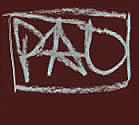

Barbie and Lilli raise interesting questions about the connections between fashion and fetishism, the way doll manufacturers reinforce existing gender stereotypes and the use of ‘toys’ as a ‘training’ device for future consumption.
Contemporary works in this section range from paintings by Patric Old, inspired by Bellmer to recast the sculptural work of former Barbie Designer Anne Zielinski-Old, to photographs by New York artist Isadore Seltzer. French photographer Olivier Rebufa creates miniature self-portraits superimposed over scenes inhabited by Barbie, who is presented as his lover, wife, groupie and muse in a series of tableaux depicting the artist’s fantasy world. Paula Rego's triptych The Pillowman example her work with the doll.
Science Medical science in the 18th and 19th centuries was concerned with aspects of body image that concentrated on the physical differences between men and women, and how this impacted on their social roles. Life-size wax anatomical models illustrating the different internal biological systems and muscle masses were made as teaching aids and for public show. In 1775 a collection of these models was housed in the Royal Museum for Physics and Natural History, Florence (La Specola).
These heavily gendered figures indicated that the male body was built for action and power and the female body for more passive, domestic pursuits. Only the female figures are shown covered in 'flesh', always complete and invariably lying down. They look as realistic as possible with added eyebrows, eyelashes and hair, creating "medical Venuses". The exhibition contrasts these images with photographs of modern works ‘Anatomical Boy’ and ‘Girl Number 9’ (1984) by Japanese artist Yotsuya Simon.
Dolls within other sciences such as life saving (the Resusci Anne life saving doll), crash tests and therapeutic diagnostics (therapy dolls used in the Tavistock Clinic) are also shown. These also carry heavy cultural symbolism and gender imaging.
Relationships For centuries, dolls have been used as objects of ritual. The ancient Egyptians created ‘Shabtis’, faience figures placed in tombs to represent servants for the deceased in the afterlife; in the UK, witches used dolls or ‘poppets’ to place a spell or curse on an individual; in Africa, dolls represent symbols of fertility or power. The most iconic ritual doll is Baby Jesus in his manger, shown each Christmas in Christian churches across the world.
Work by Michel Nedjar, who attracted the attention of Jean Dubuffet, is also featured in this